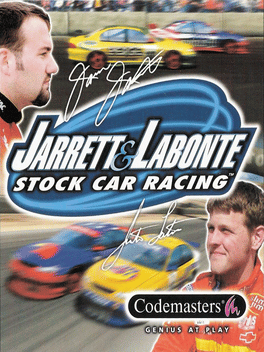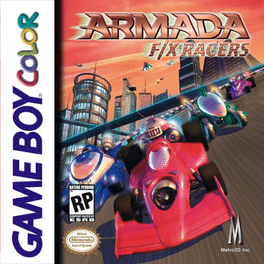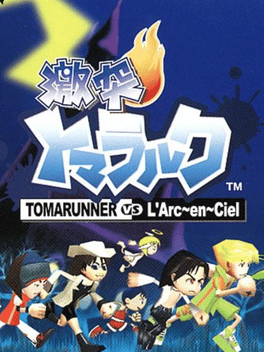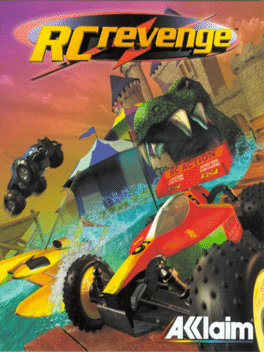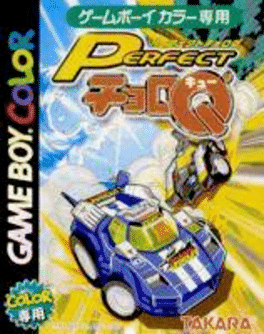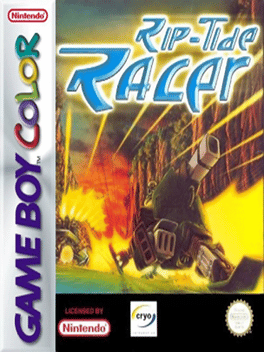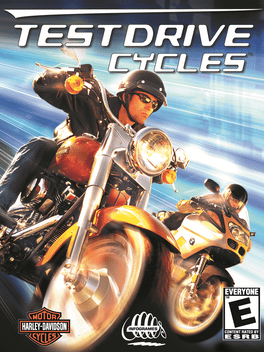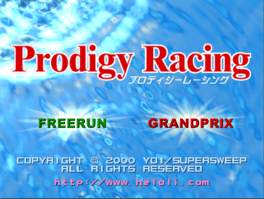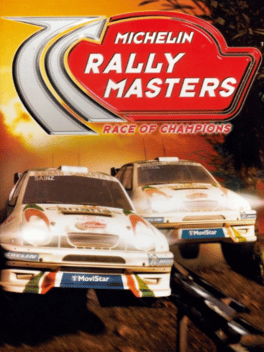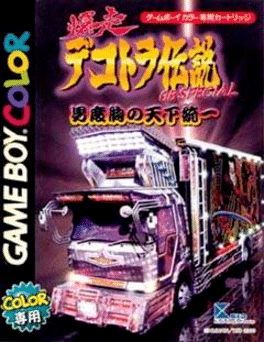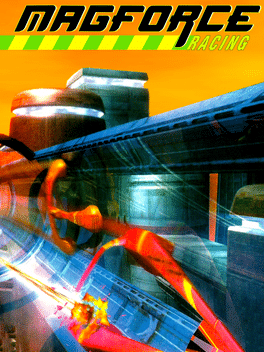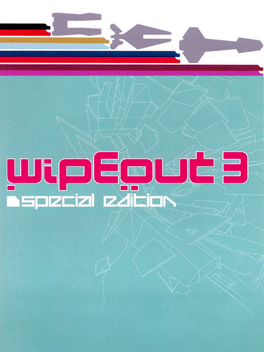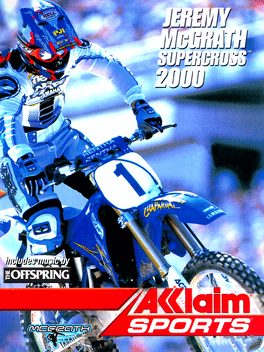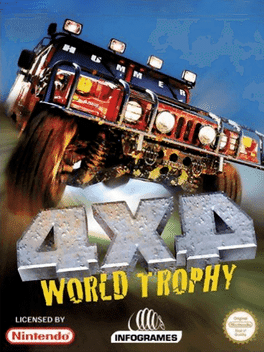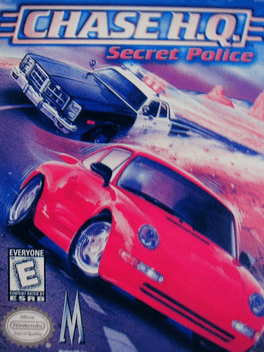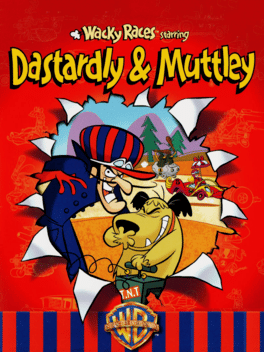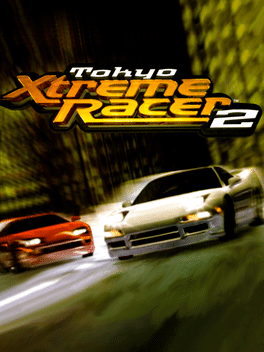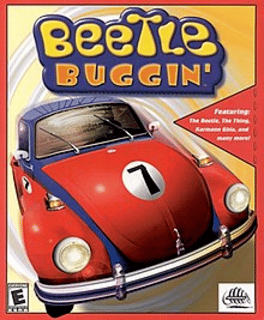New Racing Games - Page 113
-
Jarrett & Labonte Stock Car Racing
2000
The 3rd game from the successful Touring Car series. This game is bigger & better, with instead of just the British touring car series, they have expanded the game, so you can compete in touring car championships from across Europe, The America's, Asia & Australia. You can race in an exhibition race or participate in a realistic championship mode, where you choose a scenario, first of all you have to complete the testing session, similar to Gran Turismo. After that you are set a target to reach before the end of season. If you complete the target you unlock secret cars. -
Armada F/X Racers
2000
Armada F/X Racers
2000
Put adventure into overdrive, as you captain a futuristic vehicle, and race through six alien worlds to face off in a battle of wills, thrills, chills and spills. Take on opposing high-tech vehicles, obstacles and obstructions - all as you approach a final showdown against multiple-bosses in a good 'ol game of bumper cars, minus the bumpers. -
ATV Quad Power Racing
2000
ATV Quad Power Racing is an all-terrain vehicle racing video game released in 2000 for the PlayStation and in 2002 for the Game Boy Advance. There are two sequels released: ATV Quad Power Racing 2 and ATV: Quad Frenzy. -
Gekitotsu Toma L'Arc: Tomarunner Vs L'Arc En Ciel
2000
Gekitotsu Toma L'Arc: TomaRunner vs L'Arc-en-Ciel is a Japan-exclusive racing game for the PlayStation. It is the sequel to TomaRunner and includes members of the Japanese band L'Arc-en-Ciel as playable characters. Each member of the band voices the in-game characters themselves. The L'Arc-en-Ciel songs that play within the game are "Driver's High", "Stay Away", "Route 666", "Trick", and "Niji". The game was popular enough to receive a PS one Books re-release on December 21, 2001. The dream has finally become reality with the help of L'Arc en Ciel! Every fan must have this! And of course, there is fun to be had with this game. This summer, why don't you try the Tomarunner experience for yourself? -
RC Revenge
2000
RC Revenge
2000
Players take control of a range of remote controlled cars and boats in an action packed racing game for the Sony PlayStation. Based around an enchanting movie Theme world, players take their cars through a number of genre styled levels, including horror, sci-fi and cartoons. Multiplayer split screen racing available in all modes of the game and a unique track editor allows you to create your own tracks to save on memory card and challenge your friends. -
Perfect Choro Q
2000
Perfect Choro Q
2000
Perfect Choro Q is a Japanese only Game Boy Color release in the Choro Q (Penny Racers) series. -
Rip-Tide Racer
2000
Rip-Tide Racer
2000
Rip-Tide Racer is a Racing game, developed and published by Cryo Interactive, which was released in Europe in 2000. -
Test Drive Cycles
2000
Test Drive Cycles
2000
If you want the thrill of riding at high speeds on two wheels on a tight track with deadly curves and bone-jarring jumps, look no further TEST DRIVE CYCLES has all of that and more! You've got an assortment of bikes from licensed manufacturers such as Harley Davidson, BMW, Moto Guzzi, and Bimota. Once you've selected your speed machine, head to the track in one of 12 different racing circuits. Each course is packed with twists, turns, and jumps that will test your skill and push you to the edge. Watch out for other racers and obstacles as you speed to the finish line, or you may end up wrecking your fancy ride. By winning races, you can upgrade your bike with various parts that will increase your speed and handling. If you're looking for multiplayer action, link up to race against another player in a Head-to-Head race to the finish. There is also the Cop Chase mode, where you must avoid being pulled over by the fuzz. TEST DRIVE CYCLES is compatible only with Game Boy Color systems. -
Prodigy Racing
2000
Prodigy Racing
2000
Prodigy Racing is a mouse-operated 3D racing game. It is the third game in Yoichi Hayashi's Prodigy series. In this futuristic racer, players can choose from a selection of five tracks and two game modes. Pilots operate a machine equipped with an anti-gravity engine and race through a high-speed thrill of up to 400 km/h. -
Michelin Rally Masters: Race of Champions
2000
This is the OFFICIAL game of the real Race of Champions! Take the various authentic ROC cars (22 in all) through different tracks on head-to-head SuperSpecial challenge modes or traditional rally stages as you speed and slide through mud, gravel, snow, and more. Five levels of difficulty will let you learn at your own pace. Multiple game modes (RoC, Challenge Cup, Challenge Trophy, time attack, single race, single stage) keep you challenged. Run races online with other players through dedicated servers or setup your own. -
Bakusou Dekotora Densetsu GB Special: Otoko Dokyou no Tenka Touitsu
2000
Bakusou Dekotora Densetsu GB Special: Otoko Dokyou no Tenka Touitsu is a Japanese only Game Boy Color game. -
MagForce Racing
2000
MagForce Racing
2000
If you need an adrenaline rush, MagForce Racing might be just your thing: Step into your magnetic glider and race through lots of roller-coaster like tracks full of curves and loops, psyched up by pumping techno beats. There are of course power-ups scattered on the track that may be picked up, including weapon systems to get rid of your enemies. Similar to Wipeout, this is a game for speed freaks. -
Wipeout 3 Special Edition
2000
Wipeout 3 is a racing game that retains the same basic elements of its predecessors, and introduces players to the F7200 Anti-Gravity Race League. Set in 2116, players control futuristic anti-gravity ships owned by racing corporations and pilot them on eight circuits (plus four hidden prototype tracks). -
4X4 World Trophy
2000
4X4 World Trophy
2000
4X4 World Trophy is a Rally / Offroad Racing game, developed by Xantera and published by Infogrames, which was released in Europe in 2000. -
Chase H.Q.: Secret Police
2000
The chase is on in CHASE HQ: Secret Police for the Game Boy Color. Loosely adapted from the arcade game of the same name, CHASE HQ is a unique mix of racing and action for one or two players. In the One-Player mode, you'll lead a handpicked team of undercover cops, each with unique talents. You'll be shown what kind of vehicle the suspect is driving, and then you'll hit the streets to find him. When you finally locate the perp, you'll switch to a behind-the-vehicle view as you try to shoot or bump the criminal off the road. Once you've managed to lower their life-bar far enough, they'll pull over and you'll make the arrest. There are 10 levels of single-player action, so you'll be plenty busy as you try to collar the criminals. You can also grab a friend to play Head-to-Head using a link cable, with one person playing the cop and the other playing the bad guy. -
Destruction Derby Raw
2000
star 6.5Destruction Derby Raw is a vehicular combat game for PlayStation where players drive cars in demolition derbies and races. The main objective is to damage other vehicles or be the last one standing while avoiding getting destroyed. Players can choose from different cars, each with unique stats, and can upgrade them as they progress. The game features various modes, including free-for-all battles and racing on closed tracks, with a focus on destruction and survival. -
Wacky Races Starring Dastardly & Muttley
2000
Show no mercy as you fling yourself into the wildest, wackiest cartoon racing games ever! But watch out! Fiendish opponents such as Dick Dastardly and Muttley will do anything to win. So you'll need all your speed and wits to be first past the post! -
Tokyo Xtreme Racer 2
2000
Tokyo Xtreme Racer 2
2000
The thrilling followup to the original, Tokyo Xtreme Racer 2 improves in all fronts. With more road to drive on, rivals to fight, and cars to master, this entry offers everything and more. In the game, you race around the streets of Tokyo at night in an almost seamless experience, from cruising around, to joining a race, to cruising again. Flash your headlights when tailing a rival to incite a race, and after a short cinematic, you're both off. To win a race, you need to take down your opponent's power meter, while keeping yours intact. It decreases when hitting objects, and, more importantly, in last place. The game is less focused on the realism of a racer, but still takes into account a good amount of customization, from upgrades to tuning. Since you'll be driving the car almost constantly, its best to have your own personal vehicle. The roads you drive on start out limited, but expand as you dive deeper and deeper into the game. Don't expect to go without memorizing the tracks; in order to beat the best, you -
Beetle Buggin'
2000
